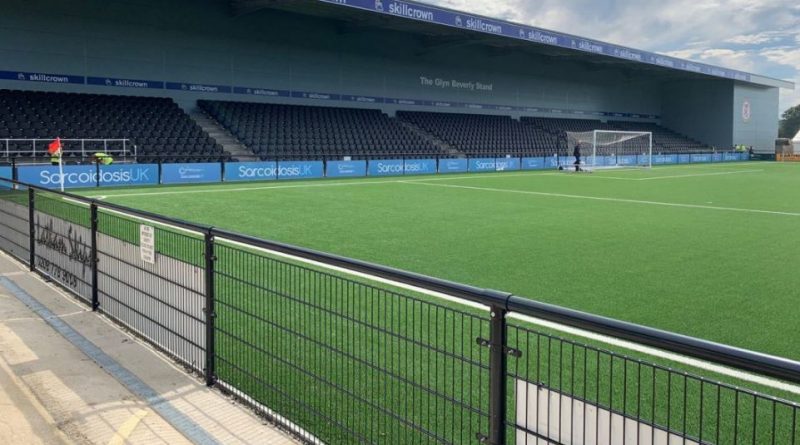Could 3G save Non League football?
Could artificial turf pitches be part of a major revolution as football comes to terms with an unprecedented financial crisis?
That was a suggestion made by former Football Association director Dan Ashworth, now technical director at Brighton and Hove Albion.
In a wide-ranging interview with national media, Ashworth called for a reboot of the game, including bringing artificial pitches back on the table for consideration – citing that the FIFA-approved football turf could be a cash-cow for clubs to host different events and develop their own academies.
Back in 2012, Maidstone United were the first English club to build a new stadium integrating the highest quality 3G artificial pitch.
Since then a number of other clubs have installed 3G pitches in the senior non-league divisions, including Bromley, Sutton United and Harrogate Town in the National League.
The EFL have previously considered allowing 3G pitches in League 1 and 2 and the vote was tied in 2014.
Although 3G pitches are allowed in the World Cup, Champions League and many professional leagues in Europe, under current rules any National League club playing on a 3G pitch has to remove it if they wish to accept promotion into the EFL.
Now with calls from leading experts to restructure football completely with innovations such as salary caps, regionalisation and a new football governing body, Maidstone United joint-owner Oliver Ash says Dan Ashmore has got it right when he suggests 3G pitches should be an option for financially-distressed EFL clubs.
He said: “With this terrible Covid-19 crisis affecting so many people and damaging so many football clubs, which are vital to their communities, we have to think outside the box if we are to avoid financial meltdown.
“Going forward it will all be about sustainability. Clubs will have to find ways of making their businesses sustainable in the interests of their supporters and their actual survival. One obvious way of achieving this is by installing a 3G pitch.
“We have now had five years’ experience of 3G pitches in the National League. We have seen supporters and players embrace the change in playing surface; we have seen that the highest quality 3G pitches encourage good football but also allow physical players to get stuck in; we have seen no particular injury problems, a welcome absence of postponements, and local people coming in their droves to watch and play football at our clubs seven days a week. It’s been life-changing in a totally positive way.”
Ashworth estimates that with direct pitch-hire revenues and indirect revenues from additional supporters coming into the club, as well as savings on maintenance and postponements, clubs using 3G pitches can generate around £400,000 extra income per annum.
“We know and respect the fact that some people still prefer to play on natural surfaces, even down in League 2, where pitch quality is inconsistent,” he said.
“However, the benefits of 3G pitches are so massive and the problems facing football so huge, it would be irrational not to give League 2 clubs the option to install them without delay and take advantage of the opportunity to transform their clubs into sustainable businesses capable of surviving this crisis and thriving thereafter.”
Bromley, Sutton United and Harrogate Town, are backing the call for change within the EFL. One day, this could also give them access to EFL without having to give up their 3G pitches.

